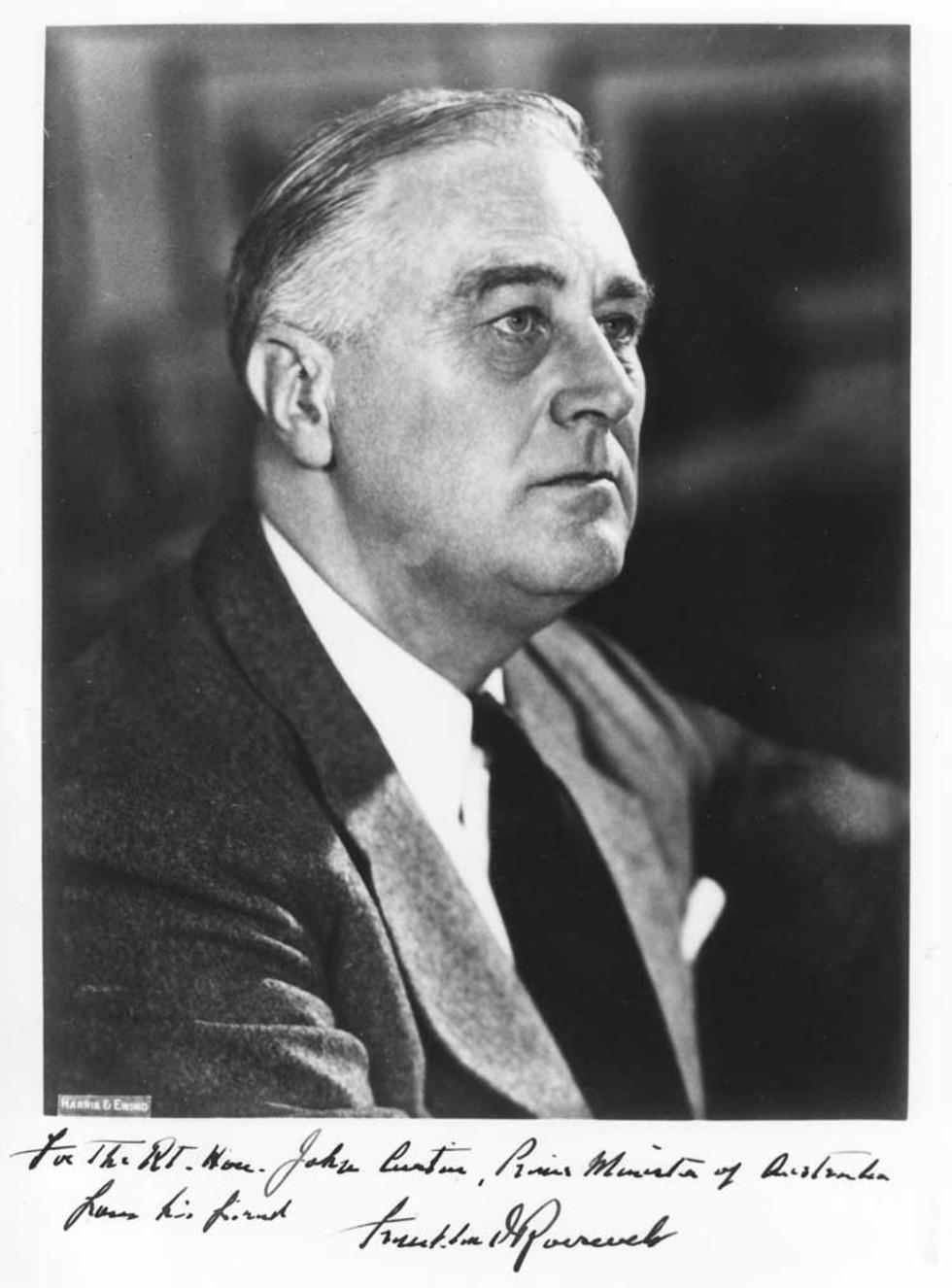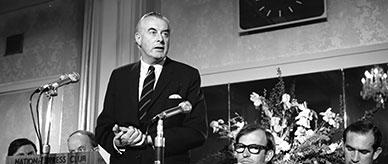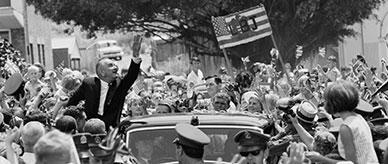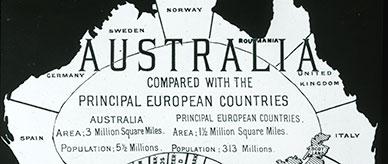


About this record
This is a photograph of US President Franklin D Roosevelt presented to Prime Minister John Curtin during his April 1944 visit to the White House in Washington DC. At the bottom of the photograph is the handwritten inscription: 'For the Rt Hon John Curtin, Prime Minister of Australia from his friend Franklin D Roosevelt'. Curtin kept the photograph in his personal papers.
Educational value
- Is a memento of John Curtin's visit to the White House during the Second World War (WW2) – Curtin and his wife Elsie stayed for several days at the White House as a guest of President Roosevelt and his wife, Eleanor, during talks between US and Australian leaders and officials on the conduct of the war and plans for the postwar period; Curtin and a party of Australian diplomatic and military officials visited the USA en route to London for the Imperial Conference of Empire Prime Ministers, held in May 1944.
- Depicts Franklin D Roosevelt (1882–1945), 32nd US President (1932–45) during his fourth term of office – Roosevelt, a Democrat, was first elected President in November 1932, having previously served as New York State Senator, Assistant Secretary of the Navy (1913–20), Democratic Party nominee for the Vice Presidency (1920, not elected) and Governor of New York (1928–32); despite contracting poliomyelitis in 1921 and suffering physical disabilities for the rest of his life resulting from the disease, Roosevelt is the only US President to have served four terms in office.
- Shows President Roosevelt during WW2 – in the early stages of the war, Roosevelt maintained US neutrality but, at the same time, provided economic aid to Great Britain and her allies in their war against Germany and Italy; after the Japanese attack on the US naval base at Pearl Harbor, Hawaii, on 7 December 1941, and the declaration of war against the USA by Germany and Italy four days later, Roosevelt mobilised the US armed forces and economy to pursue the defeat of the Germany –Japan axis.
- Is evidence of the warm relationship between Curtin and the US President – in 1942, the darkest time of the war when Australia was under threat of invasion from Japan, Curtin had 'turned to America' and Roosevelt had responded to Australia's call for help by sending General Douglas MacArthur, at the time Supreme Commander of Allied Forces in the southwest Pacific and of the US forces.
- Is a photograph showing Roosevelt in a high-minded and determined 'leader' pose – Roosevelt secured agreement of the Allied nations, through the 'Declaration of the United Nations', that they would not make separate peace and would form an international peacekeeping organisation (the 'United Nations') after victory over the axis powers.
- Bears little resemblance to how Roosevelt actually looked in 1944 – like Prime Minister John Curtin, President Roosevelt suffered ill health and died in office in 1945, just before the Allied victory and the end of the war.
Acknowledgments
Learning resource text © Education Services Australia Limited and the National Archives of Australia 2010.
Related themes
Need help with your research?
Learn how to interpret primary sources, use our collection and more.




